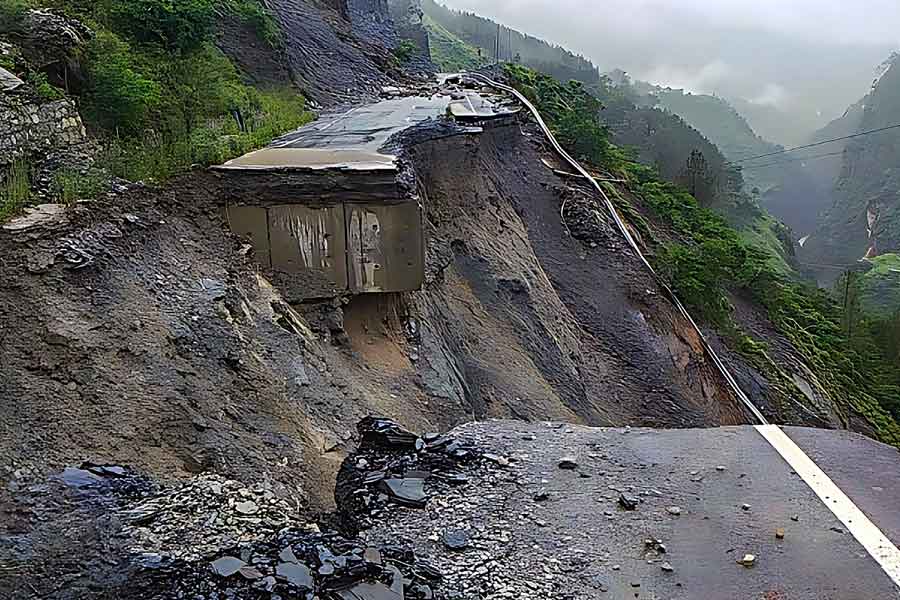A stretch about 50 metres long on the Rishikesh-Badrinath National Highway near Pursari village is showing signs of land subsidence with cracks appearing on it.
The stretch located between Chamoli and Nandprayag is apparently sinking towards the Alaknanda River. Alarmed by the situation, authorities have warned vehicles coming from the mountainside to go slow.
A police team has been deployed on the affected spot to alert the drivers.
The subsidence-sensitive spot has been demarcated with reflective tapes for the safety of vehicles and drivers are being asked to drive carefully, Traffic Inspector Praveen Alok said.
Land subsidence near Pursari increased after the Kedarnath disaster in 2013.
As a result, the government undertook a road stabilisation project roping in big companies and experts from the area and constructed concrete blocks along the banks of the Alaknanda at the cost of crores of rupees after which the subsidence stopped.
However, the place is showing signs of erosion again.
The engineers of the National Highways Authority of India are making efforts to repair the landslide-prone area by filling the cracks with soil and stones, a government official said.
Heavy rain this monsoon has not only led to the emergence of fresh landslide points along the highway but has also activated old ones due to which the traffic is getting disrupted frequently, he said.
National Highways and Infrastructure Development Corporation Limited (NHIDCL) General Manager Shailendra Kumar, who is involved in the construction of the National Highway in the area, told PTI that to prevent landslides, concrete blocks had been constructed on the banks of the Alaknanda which had stopped the erosion of the river.
The road had since been stable but the rise in the water level in the Alaknanda is making water flow over the concrete blocks which may have led to increased subsidence in the area, Kumar said.
"About 50 metres of the road is affected. As a temporary remedy, the road is being repaired by pouring mud and stones into the cracks and filling them," he said.
Except for the headline, this story has not been edited by The Telegraph Online staff and has been published from a syndicated feed.











